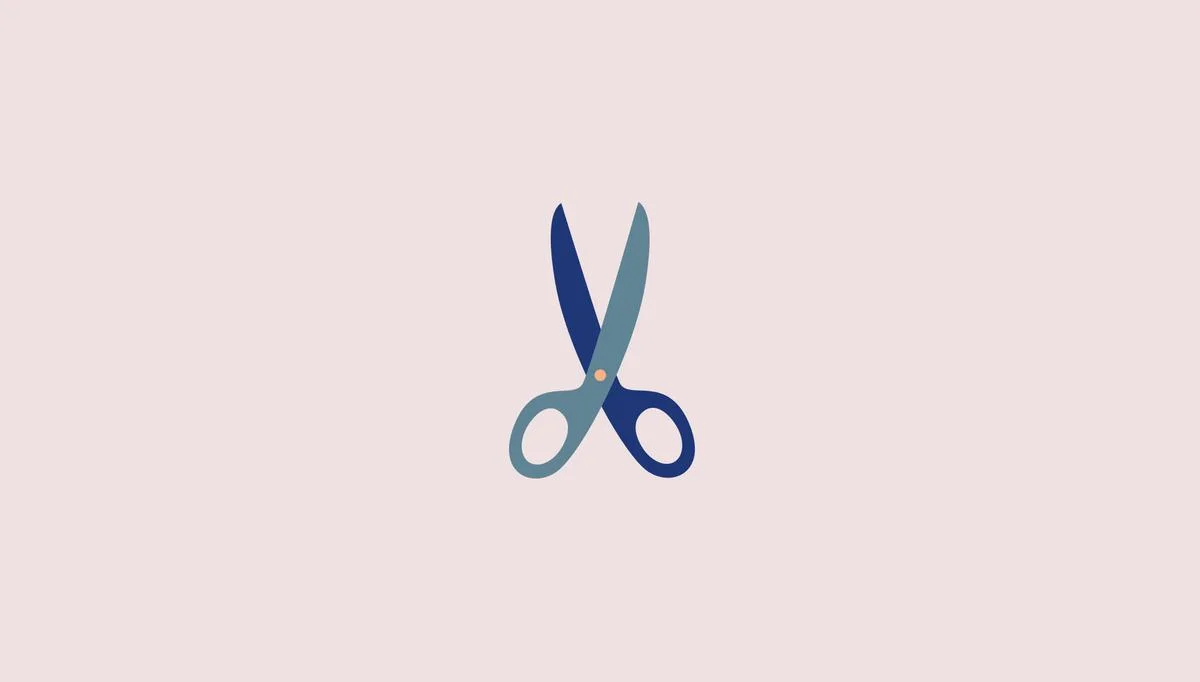Here's what we'll cover
Here's what we'll cover
Whether you visit a healthcare provider when you’re feeling sick or for a check-up, a blood pressure measurement is usually part of the visit. But what does the blood pressure level mean? When is it considered too high—a condition called hypertension—and what can you do if it is? Read on to find out.
What is hypertension (high blood pressure)?
Blood pressure refers to the pressure in your blood vessels (arteries) as your heart pumps blood through them. That pressure is necessary because it helps your blood flow to all of the organs in your body. But this pressure can get too high due to certain factors. High blood pressure (aka hypertension) is a common condition, affecting nearly half of adults in the United States (CDC, 2021; Muntner, 2018).
What is considered high blood pressure?
First, let’s explain how a blood pressure reading works. Normal blood pressure for most adults is below 120/80 mmHg. The top number (in this case, 120) is called systolic pressure, while the bottom number (in this case, 80) is called diastolic pressure. Depending on how much either (or both) of these numbers is elevated, it’s considered elevated blood pressure or hypertension.
There are two stages of hypertension, plus some other classifications (Whelton, 2018):
Stage 1 hypertension
This is when the systolic blood pressure is between 130–139 or the diastolic blood pressure is between 80–89. Healthcare providers usually don’t prescribe medication for Stage 1 hypertension, but they will recommend lifestyle changes to lower it.
Stage 2 hypertension
A worse stage of hypertension is when the systolic pressure is 140 or higher or the diastolic pressure is 90 or higher. At this stage, healthcare providers usually prescribe medications to lower blood pressure.
Elevated blood pressure (prehypertension)
Elevated blood pressure means that your blood pressure is above what is considered normal, but not high enough to be considered hypertension. Elevated blood pressure is also called “prehypertension” and could be a sign that you’re developing high blood pressure. In prehypertension, the systolic pressure is between 120 and 129 (Srivastava, 2021).
“White coat hypertension”
If you get one high blood pressure reading at your provider’s office, it may not necessarily be true hypertension, but it could be a phenomenon called “white coat hypertension” (WCHT). WCHT is when your blood pressure is high in a healthcare setting because you feel nervous, even if you don’t get the same readings at home.
If you get two normal blood pressure readings on a home blood pressure monitor at least 24 hours apart, you likely have WCHT, not true hypertension (Martin, 2014). If, however, you get multiple high blood pressure readings in your provider’s office and at home, this is likely true hypertension.
Masked hypertension
Masked hypertension is basically the opposite of white coat hypertension—blood pressure that’s high at home, but looks normal at the healthcare provider’s office. Usually, people with masked hypertension have a systolic blood pressure that’s normal or slightly elevated in the office. When they monitor their blood pressure at home, they have blood pressure measurements of 130/80mmHg or more (Iqbal, 2021). Experts are still learning how to best manage people with masked hypertension (Anstey, 2019).
Symptoms of high blood pressure
Many people with hypertension don’t have any symptoms. They may not even know they have high blood pressure until a healthcare provider discovers it at a check-up. But if the condition gets worse, they may experience symptoms, such as:
Dizziness
Chest pain
Shortness of breath
Racing heartbeat (palpitations)
Headache (hypertension headache)
Blurry vision
Blood in the urine (hematuria)
Nosebleeds
Confusion
If you’re having symptoms, it’s important to talk to your healthcare provider because if your blood pressure gets too high, you may be at increased risk of complications like heart attack, stroke, and kidney failure.
Types of hypertension
There are two main types of hypertension: primary and secondary.
Primary (essential) hypertension is high blood pressure with no clear cause (idiopathic hypertension). Secondary hypertension is high blood pressure caused by another underlying medical condition.
Hypertension can also be divided depending on where in the body it occurs. The categories include:
Systemic hypertension: High blood pressure in the arteries throughout the entire body. Most people think of this when they hear the term high blood pressure, and it’s the most common type of hypertension.
Pulmonary hypertension: High blood pressure in the lung blood vessels
Intracranial hypertension: High blood pressure in the blood vessels of the brain
What causes hypertension?
As mentioned above, primary hypertension doesn’t have a single identifiable cause. Still, many risk factors likely contribute to it, such as family history (genetics) and factors like weight, diet, and exercise habits (Iqbal, 2021).
Many different medical conditions can cause secondary hypertension, including (Unger, 2020):
Overactive thyroid (hyperthyroidism)
Pregnancy (hypertension in pregnancy, or pre-eclampsia)
A tumor called a pheochromocytoma in a gland that sits on top of your kidney (adrenal gland) produces certain chemicals that can raise your blood pressure.
Anxiety and stress
A gland condition called Cushing’s disease
A condition called sleep apnea in which you have breathing problems while you sleep
Narrow blood vessels in the kidney (renal artery stenosis)
Medications like anti-inflammatory medicines (NSAIDs), birth control pills (oral contraceptive pills), decongestants, such as phenylephrine, and stimulants such as Adderall
Recreational substances (cocaine, LSD, ecstasy)
How to lower high blood pressure
In elevated blood pressure and Stage 1 hypertension, healthcare providers usually recommend healthy lifestyle changes (lifestyle modification) or home remedies for high blood pressure. These modifications include:
Weight loss: People with overweight or obesity may lower their blood pressure by reducing their body weight (Cohen, 2017).
Smoking cessation: People who smoke have a higher risk of more severe hypertension and complications, so cutting out tobacco can lower your risk (Virdis, 2010).
Diet changes: A heart-healthy diet can help lower blood pressure. You can decrease your salt (sodium) and cholesterol intake, eat more fruits and vegetables, and drink less alcohol (Samadian, 2016). The popular heart-healthy DASH diet (Dietary Approaches to Stop Hypertension) is based on this and recommends fewer processed foods and more lean proteins, healthy fats, whole grains, fruits, and vegetables (Filippou, 2020).
Exercise: Regular physical activity has many benefits, including lowering your blood pressure (Sharman, 2015).
Good sleep hygiene: Not getting enough sleep at night is closely linked to high blood pressure (Palagini, 2013). Improving your sleep hygiene can help.
Mindfulness: Mindfulness and meditation can reduce stress and anxiety, which can help lower your blood pressure (Conversano, 2021).
Hypertension medications
Suppose lifestyle modifications don’t lower your blood pressure enough, or you have Stage 2 hypertension. In that case, your healthcare provider may prescribe medications to treat it and reduce your risk of heart attacks and strokes (BPLTTC, 2008). Some of the most common classes of blood pressure medications include:
Diuretics, that help the body get rid of excess sodium (salt) and water
ACE inhibitors (angiotensin converting enzyme inhibitors), which help the blood vessels relax and open up
Beta-blockers, which reduce the heart rate and the heart’s output of blood
Calcium channel blockers, which help relax and open up narrowed blood vessels
Millions of adults in the US have high blood pressure—many without even knowing it. But there are many ways to lower your blood pressure, some as simple as modifying your diet and doing more physical activity. Your healthcare provider can help determine whether you have high blood pressure and recommend the best options for you.
DISCLAIMER
If you have any medical questions or concerns, please talk to your healthcare provider. The articles on Health Guide are underpinned by peer-reviewed research and information drawn from medical societies and governmental agencies. However, they are not a substitute for professional medical advice, diagnosis, or treatment.
Anstey, D. E., Moise, N., Kronish, I., & Adballa, M. (2019). Masked hypertension: whom and how to screen? Current Hypertension Reports, 21(4), 26. doi: 10.1007/s11906-019-0931-1. Retrieved from https://pubmed.ncbi.nlm.nih.gov/30949843/
Blood Pressure Lowering Treatment Trialists' Collaboration (BPLTTC), Turnbull, F., Neal, B., et al. (2008). Effects of different regimens to lower blood pressure on major cardiovascular events in older and younger adults: meta-analysis of randomised trials. British Medical Journal (Clinical Research Edition), 336(7653), 1121–1123. doi:10.1136/bmj.39548.738368.BE. Retrieved from https://www.ncbi.nlm.nih.gov/pmc/articles/PMC2386598
Caballero-Gonzalez, F. J. (2015). Calcium channel blockers in the management of hypertension in the elderly. Cardiovascular & Hematological Agents in Medicinal Chemistry, 12(3), 160–165. doi:10.2174/1871525713666150310111554. Retrieved from https://pubmed.ncbi.nlm.nih.gov/25761102/
Centers for Disease Control and Prevention (CDC). (2021). Facts about hypertension. Retrieved on May 16, 2022 from https://www.cdc.gov/high-blood-pressure/data-research/facts-stats/?CDC_AAref_Val=https://www.cdc.gov/bloodpressure/facts.htm
Cohen, J. B. (2017). Hypertension in obesity and the impact of weight loss. Current Cardiology Reports, 19(10), 98. doi:10.1007/s11886-017-0912-4. Retrieved from https://www.ncbi.nlm.nih.gov/pmc/articles/PMC5606235/
Conversano, C., Orrù, G., Pozza, A., et al. (2021). Is mindfulness-based stress reduction effective for people with hypertension? A systematic review and meta-analysis of 30 years of evidence. International Journal of Environmental Research and Public Health, 18(6), 2882. doi:10.3390/ijerph18062882R. Retrieved from https://www.ncbi.nlm.nih.gov/pmc/articles/PMC8000213/
Elliott, W. J. (2007). Systemic hypertension. Current Problems in Cardiology, 32(4), 201–259. doi:10.1016/j.cpcardiol.2007.01.002. Retrieved from https://pubmed.ncbi.nlm.nih.gov/17398315/
Filippou, C. D., Tsioufis, C. P., Thomopoulos, C. G., et al. (2020). Dietary Approaches to Stop Hypertension (DASH) diet and blood pressure reduction in adults with and without hypertension: A systematic review and meta-analysis of randomized controlled trials. Advances in Nutrition (Bethesda, MD.), 11(5), 1150–1160. doi:10.1093/advances/nmaa041. Retrieved from https://www.ncbi.nlm.nih.gov/pmc/articles/PMC7490167/
Finocchi, C. & Sassos, D. (2017). Headache and arterial hypertension. Neurological Sciences: Official Journal of the Italian Neurological Society and of the Italian Society of Clinical Neurophysiology, 38(Suppl 1), 67–72. doi:10.1007/s10072-017-2893-x. Retrieved from https://pubmed.ncbi.nlm.nih.gov/28527058/
Heran, B. S., Wong, M. M., Heran, I. K., & Wright, J. M. (2008). Blood pressure lowering efficacy of angiotensin converting enzyme (ACE) inhibitors for primary hypertension. The Cochrane Database of Systematic Reviews, 2008(4), CD003823. doi:10.1002/14651858.CD003823.pub2. Retrieved from https://www.ncbi.nlm.nih.gov/pmc/articles/PMC7156914/
Iqbal, A. M. & Jamal, S. F. (2021). Essential hypertension. StatPearls. Retrieved on Feb. 17, 2022 from https://www.ncbi.nlm.nih.gov/books/NBK539859/
Markey, K. A., Mollan, S. P., Jensen, R. H., & Sinclair, A. J. (2016). Understanding idiopathic intracranial hypertension: mechanisms, management, and future directions. The Lancet. Neurology, 15(1), 78–91. doi:10.1016/S1474-4422(15)00298-7. Retrieved from https://pubmed.ncbi.nlm.nih.gov/26700907/
Martin, C. A. & McGrath, B. P. (2014). White-coat hypertension. Clinical and Experimental Pharmacology & Physiology, 41(1), 22–29. doi:10.1111/1440-1681.12114. Retrieved from https://pubmed.ncbi.nlm.nih.gov/23682974/
Modi, P. & Arsiwalla, T. (2021). Hypertensive retinopathy. StatPearls. Retrieved on Feb. 17, 2022 from https://www.ncbi.nlm.nih.gov/books/NBK525980/
Muntner, P., Carey, R. M., Gidding, S., et al. (2018). Potential US population impact of the 2017 ACC/AHA High Blood Pressure Guideline. Circulation, 137(2), 109–118. doi:10.1161/CIRCULATIONAHA.117.032582. Retrieved from https://www.ncbi.nlm.nih.gov/pmc/articles/PMC5873602/
Ozemek, C., Laddu, D. R., Arena, R., & Lavie, C. J. (2018). The role of diet for prevention and management of hypertension. Current Opinion in Cardiology, 33(4), 388–393. doi:10.1097/HCO.0000000000000532. Retrieved from https://pubmed.ncbi.nlm.nih.gov/29771736/
Palagini, L., Bruno, R. M., Gemignani, A., et al. (2013). Sleep loss and hypertension: a systematic review. Current Pharmaceutical Design, 19(13), 2409–2419. doi:10.2174/1381612811319130009. Retrieved from https://pubmed.ncbi.nlm.nih.gov/23173590/
Samadian, F., Dalili, N., & Jamalian, A. (2016). Lifestyle modifications to prevent and control hypertension. Iranian Journal of Kidney Diseases, 10(5), 237–263. Retrieved from https://pubmed.ncbi.nlm.nih.gov/27721223/
Sharman, J. E., La Gerche, A., & Coombes, J. S. (2015). Exercise and cardiovascular risk in patients with hypertension. American Journal of Hypertension, 28(2), 147–158. doi:10.1093/ajh/hpu191. Retrieved from https://pubmed.ncbi.nlm.nih.gov/25305061/
Sica, D. A., Carter, B., Cushman, W., & Hamm, L. (2011). Thiazide and loop diuretics. Journal of Clinical Hypertension (Greenwich, Conn.), 13(9), 639–643. doi:10.1111/j.1751-7176.2011.00512.x. Retrieved from https://www.ncbi.nlm.nih.gov/pmc/articles/PMC8108854/
Srivastava, A., Mirza, T. M., Sharan, S. (2021). Prehypertension. StatPearls. Retrieved from https://www.ncbi.nlm.nih.gov/books/NBK538313/#:~:text=Prehypertension%2C%20the%20intermediate%20stage%20between,economically%20developing%20and%20developed%20nations
Unger, T., Borghi, C., Charchar, F., et al. (2020). 2020 International Society of Hypertension global hypertension practice guidelines. Journal of Hypertension, 38(6), 982–1004. doi:10.1097/HJH.0000000000002453. Retrieved from https://journals.lww.com/jhypertension/Fulltext/2020/06000/2020_International_Society_of_Hypertension_global.2.aspx
Virdis, A., Giannarelli, C., Neves, M. F., et al. (2010). Cigarette smoking and hypertension. Current Pharmaceutical Design, 16(23), 2518–2525. doi:10.2174/138161210792062920. Retrieved from https://pubmed.ncbi.nlm.nih.gov/20550499/
Vonk Noordegraaf, A., Groeneveldt, J. A., & Bogaard, H. J. (2016). Pulmonary hypertension. European Respiratory Review: An Official Journal of the European Respiratory Society, 25(139), 4–11. doi:10.1183/16000617.0096-2015. Retrieved from https://pubmed.ncbi.nlm.nih.gov/26929415/
Whelton, P. K., Carey, R. M., Aronow, W. S., et al. (2018). 2017 ACC/ AHA/ AAPA/ ABC/ ACPM/ AGS/ APhA/ ASH/ ASPC/ NMA/ PCNA Guideline for the prevention, detection, evaluation, and management of high blood pressure in adults: executive summary: A report of the American College of Cardiology/American Heart Association Task Force on Clinical Practice Guidelines. Journal of the American College of Cardiology, 71(19), 2199–2269. doi:10.1016/j.jacc.2017.11.005. Retrieved from https://pubmed.ncbi.n l m.nih.gov/29146533/










